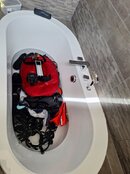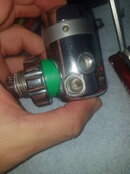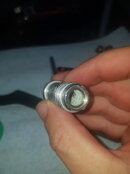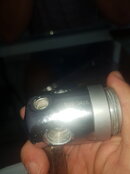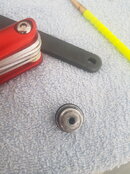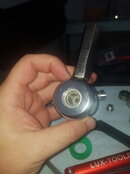I only do about 50 dives a year max typically with approx 20 days actually in the water. And I don’t trust myself to simply do a one day course and service my own regs when my life depends on it. The one thing I know from my own competencies in other domains is that it takes a hell lot of repeat practice to be good at something.
Skipping regulator maintenance, either stage, and just hoping for the best, is never a good idea -- and only increases the chance of an ignominious entry into the "Accidents, Incidents, & Near Misses" forum; and none of us wish to be a recipient of that booby prize.
Even though you stated that the regulators were seldom used, the method of equipment storage is as important if not more so than the degree of usage. Corrosion is king in the off-season, just judging from the salt-lick messes that I've seen, pulled from hall closets, for Spring or Summer rebuilds.
I hate to tell you, but those single day courses that concerned you -- those scant few hours at a Marriott conference room; or, some recently held online, since the covidiocy -- are typical of the dive industry, and of the breadth of formal training that shop techs now receive from the sport itself, to futz with and maintain life support equipment.
On the other hand, resident expert
@rsingler, through Napa Scuba LLC, offers a demanding two or three day online course, a few times a year, the likes of which I have never seen, in terms of exhaustive theory, application, and mechanics (
there's even some book-learnin' involved). Even if you never desired to service your own gear, it could offer the prospective diver far more consumer confidence in the handling, maintenance, and maybe encourage some minor adjustments of his or her own equipment.
You'd never again go into the local dive shop as a lamb to slaughter:
Having attended standard manufacturer's courses over the years, I was stunned that a written test and testing on a bench was no longer required, to receive a certificate or recertification -- that, after boning up the previous night, at a no-tell motel, on various funky assembly steps, settings and protocols, over rotgut takeout Chinese -- just to watch the instructor, a nice guy, wearily tune a single regulator (though we had assembled three), over a small overhead projector from across the room, his back to most of us.
He could have been making balloon animals for all we knew.
For that matter, your life could well hinge upon the likes of the teenage punk, who sat next to me that day, and whose most memorable accomplishment, aside from immediately losing o-rings on the carpet, had been to royally prong his thumb with a tiny Wiha screwdriver and bleed like a stuck saint . . .



